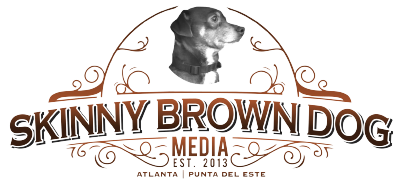Hey there, Fiction Writers!
Let’s take a minute and dive into the Catalyst Beat of our story:
- What it is and why it’s critical
- 10 Catalysts and the genres they work best in
- How to write an effective Catalyst using AI
Without A Catalyst, There’s No Story
The Catalyst’s purpose is to disrupt the protagonist’s status quo and force them to make a choice that propels them into the main conflict.
- The protagonist is minding their own business
- In their everyday world
- And that’s when… the Catalyst happens
Which raises a story-worthy problem they can’t ignore. Everything before this moment is setup; everything after is the story.
Let’s take a look at a few of the most common genre-appropriate catalyst events.
10 Proven Story Catalyst Events
1. Call To Adventure (Fantasy, Sci-Fi, Adventure): The hero receives an invitation or summons to leave the ordinary world and enter a new realm of adventure. Think Gandalf visiting Bilbo or R2-D2’s message to Obi-Wan.
2. Loss Of Innocence (Coming-of-Age): A shocking event shatters the protagonist’s naïve worldview and thrusts them into the adult world. Consider the deaths that change Harry Potter or Katniss in The Hunger Games.
3. Death Of A Loved One (Any genre): A family member, mentor, love interest or close friend dies, upending the protagonist’s life. It’s especially common in revenge and heroic sacrifice stories.
4. Betrayal (Any genre): Someone the protagonist trusts reveals their true colors in a devastating double-cross. This shakes their faith in people and themselves.
5. World Turned Upside-Down (Thriller, Horror): The protagonist discovers that nothing they believe is true, or that sinister forces are at work behind the scenes. Their old life crumbles.
6. Opportunity (Sports, Competition, Business): The protagonist gets a once-in-a-lifetime shot to achieve their dreams, but it will cost them. Rocky’s title bout and Elle Woods’ Harvard acceptance are classic examples.
7. Breakup (Romance, Comedy): The protagonist’s long-term relationship implodes, leaving them adrift. This is especially poignant if their identity was tied to the relationship.
8. Diagnosis (Drama, Lit Fic): The protagonist learns they or a loved one is terminally ill, disabled, or neurodivergent. Everything changes in that doctor’s office.
9. Moving (Any genre): The protagonist is uprooted to a new location that’s totally foreign to them. This works best when wrapped around another Catalyst like a parent’s divorce or a parent’s new job.
10. Comeback (Sports, Competition): A humiliating defeat sends the protagonist into a downward spiral—until they decide to dust themselves off and try again. But this time, they’ll have to do it on their own terms.
There are certainly more than 10 ways to kick off a story. And if none of these 10 types quite fit your story, try using this simple AI prompt to generate more genre-specific ideas:
The Catalyst Brainstormer Prompt (yep using AI to write)
Brainstorm a list of 20 inciting incidents to kick off a [GENRE] story. Focus on events that are specific to the genre, disrupt the protagonist’s status quo, and raise the stakes. Avoid clichés and use 10 words or less for each incident. Group the list by category or type.
The key is sticking to a Catalyst that fits your genre and ties it to your protagonist’s fears, hopes, and the Theme of your story. The risk is settling for a clichéd, seen-it-before inciting incident.
Now, Let’s Write the Catalyst Scene
Write A Riveting Catalyst With AI
One of the biggest challenges in writing a good Catalyst is making it specific and personal to your protagonist. It needs to disrupt their world in a way that is uniquely consequential to them.
For example:
Consider a Catalyst where the protagonist’s hometown is attacked. To make this feel personal, AI can help you:
- Brainstorm specific details about what the protagonist loves about their hometown
- Generate ideas for how the attack threatens what matters to the protagonist
- Explore different ways the protagonist could respond that creates a dilemma
By grounding the Catalyst in specifics and connecting it to the protagonist’s goals, fears, and choices, AI helps you craft an inciting incident that will get the story moving and make readers invested.
The “And That’s When” Prompt
This prompt is designed to write a riveting Catalyst based on your story’s DNA. By priming the AI with key details about your protagonist, world, and theme, it will help you kick your story into high gear.
Here’s how to use the prompt in three steps:
1. Describe your protagonist’s current situation and what they care about most.
2. Identify the type of Catalyst that would disrupt this situation.
3. Use the AI to generate specific scenarios that fit this Catalyst type and your story’s genre.
Remember, the Catalyst is the event that makes your protagonist’s journey inevitable. It’s the spark that lights the fuse, leading to an explosion of action, conflict, and growth.
Now go ahead and give your story the Catalyst it deserves!
Ready to dive deeper into your story’s structure? Stay tuned for more blog post where we’ll explore the Debate beat, where your protagonist faces the tough choice of whether to take on the journey or not. Happy writing!




